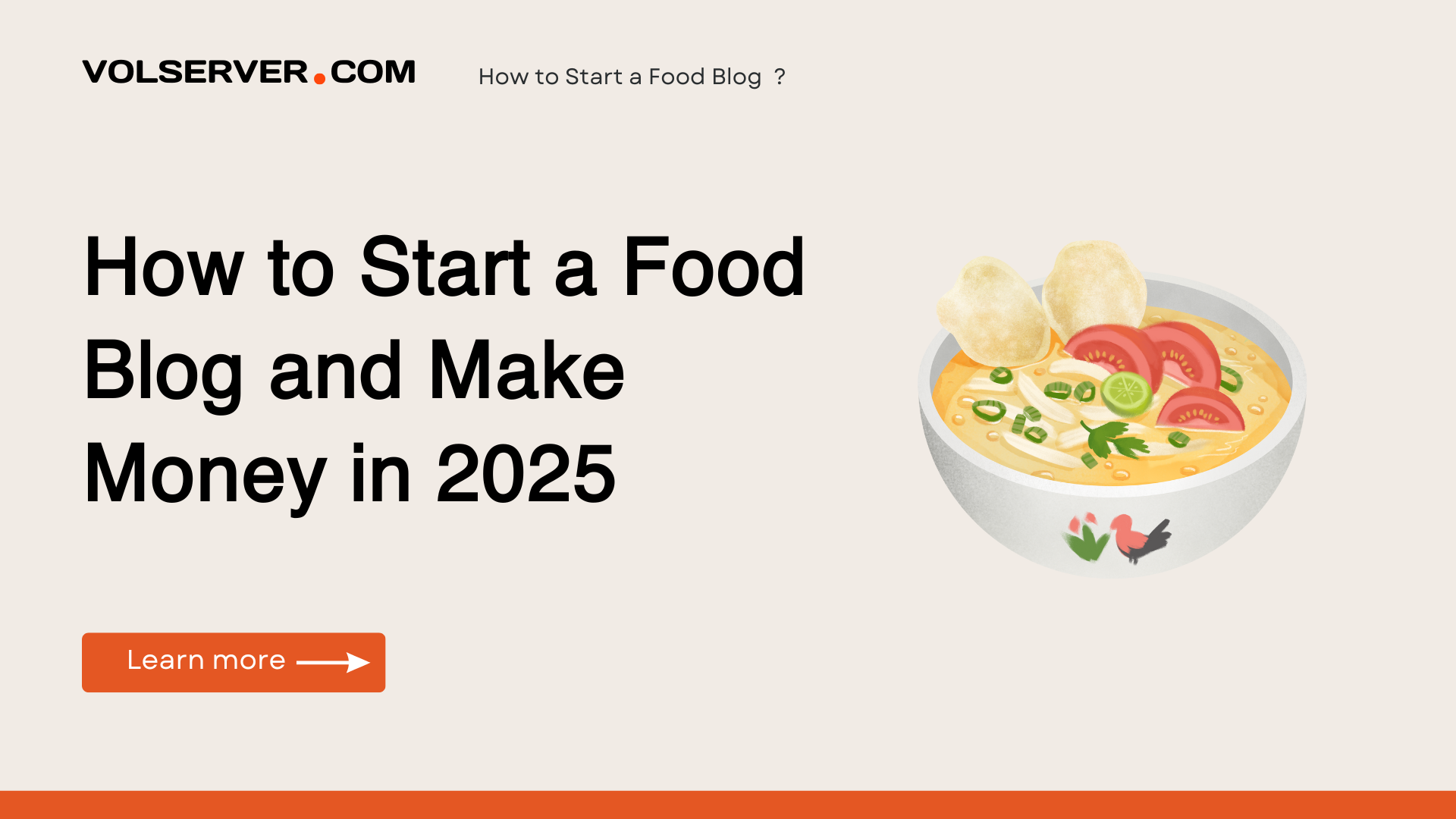Ever scrolled past a stunning plate of pasta on Instagram and thought, “I could totally do this!”
You’re not alone. In 2025, food blogging isn’t just a hobby — it’s a thriving digital business with real income potential.
Whether you’re passionate about plant-based recipes, obsessed with street food, or just want to share grandma’s secret biryani recipe, now’s the perfect time to turn your food passion into a profitable online brand.
In this guide, you’ll learn exactly how to start a food blog and make money in 2025, using tools, strategies, and workflows trusted by modern creators.
🧠 What Is a Food Blog, Really?
A food blog is a content platform where creators share recipes, restaurant reviews, cooking tips, or food stories — usually via a website, supported by social media and email marketing.
But in 2025, food blogs go beyond just “writing posts.” They’re multimedia engines combining SEO, email lists, social media reels, affiliate marketing, and even AI-generated content.
Types of food blogs you can start today:
- 📝 Recipe-based blogs (vegetarian, keto, desserts…)
- 📍 Local foodie blogs (city guides, hidden gems)
- 📸 Food photography & styling tutorials
- 🧑🍳 Cooking journey/lifestyle (beginner to chef)
The best part? You don’t need to be a chef. You just need consistency, a niche, and a story.
🔍 Real-World Use Cases (And Why Food Blogs Are Still Relevant)
You might ask: “Isn’t the food blogging space saturated?”
It’s competitive, yes — but also huge.
Here are 3 real-world examples of food blogs making waves:
🍰 Case 1: Minimalist Baker
Started with simple, 10-ingredient recipes. Today? Millions of monthly visits, a best-selling cookbook, and partnerships with Whole Foods.
🌱 Case 2: PlantYou
Built around a vegan lifestyle — now a visual-first food blog with Instagram reels, meal plans, and eBooks. Revenue? Over $20K/month.
🎥 Case 3: Ethan Chlebowski (YouTube → Blog)
This creator used YouTube first, then expanded to his blog for deeper recipes, affiliate revenue, and digital products.
💡 Lesson? The blog is the engine, but it’s the brand and workflow that make it profitable.
🛠️ Tools & Platforms to Build a Food Blog (2025 Edition)
You don’t need to know how to code. You just need the right tools:
🌐 Website & CMS
| Platform | Why Use It? |
|---|---|
| WordPress.org | Full control, SEO plugins, recipe schema support |
| Wix / Squarespace | Easy drag-n-drop, but limited for monetization |
🔧 VolServer.com Tip: If you’re serious about growth, go with WordPress + Rank Math SEO + WP Recipe Maker.
📸 Photography Tools
- Smartphone + natural light (beginner-friendly)
- Adobe Lightroom or Canva for editing
- Tripod + ring light for pro setups
📈 Analytics & Monetization
- Google Analytics 4
- Mediavine / Ezoic (ads)
- Amazon Affiliate / Impact (affiliate links)
- Gumroad / Podia (sell eBooks or plans)
✅ Best Practices: Start Strong, Grow Fast
Want to skip the mistakes most beginners make? Follow these:
✅ Do:
- Pick a specific niche: “Quick vegan recipes for students” > “food blog”
- Post consistently (1–2x per week minimum)
- Use structured recipes (Recipe schema, print buttons)
- Build an email list from day one (use ConvertKit or MailerLite)
- Invest in food photography basics — images drive traffic
❌ Avoid:
- Copying others without your voice
- Ignoring SEO: optimize every post
- Overthinking tech — just launch!
- Writing for yourself instead of solving readers’ problems
🔄 Workflow Integration for Busy Creators
Once you get going, you’ll need systems to stay sane. Here’s a typical weekly workflow:
🗓️ Example Workflow (for a part-time food blogger)
| Day | Task |
|---|---|
| Monday | Research keywords, plan 1 blog post |
| Tuesday | Cook & shoot photos |
| Wednesday | Write & optimize the post (SEO, schema) |
| Thursday | Promote via email + social |
| Friday | Schedule next week’s post, tweak site |
Bonus Tip: Use Notion or Trello to manage your content calendar.
❓ FAQs
How much does it cost to start a food blog?
Roughly $60–$150/year if self-hosted (domain + hosting + plugins).
Can I start without a camera?
Yes. A smartphone with good lighting is enough to begin.
How long before I make money?
Usually 6–12 months with consistent effort and traffic growth.
What’s the best hosting for food blogs?
At VolServer.com, we recommend Cloudways + WordPress for speed, security, and scalability.
Should I be on Instagram or Pinterest?
Both help. But for traffic → Pinterest. For branding → Instagram.
Is AI content allowed?
Yes — but always review/edit. Use it to speed up drafts or generate outlines.
How do food blogs make money?
Ads, affiliate links, sponsored posts, digital products, memberships.
What plugins should I install?
Rank Math SEO, WP Recipe Maker, ShortPixel (image optimization), SiteGround Security.
Do I need to be a chef?
Not at all. Authenticity and helpfulness matter more.
Is YouTube necessary?
Not required, but video adds major value and monetization potential.
🚀 Conclusion: Your Food Blog Journey Starts Now
Starting a food blog in 2025 is like planting a digital seed — with the right content, tools, and consistency, it will grow.
You don’t need to be a chef. You don’t need to be famous. You just need to start.
“Someone out there is Googling a recipe you’ve already mastered.”
So here’s your next step:
👉 Check out VolServer.com’s guide to fast WordPress hosting
👉 Download our free Food Blog Starter Kit (PDF)
👉 Or start writing your first blog post today using our AI content outline generator
🧠 Final Word from VolServer.com
At VolServer.com, we help creators build powerful blogs backed by performance-first tools, practical tutorials, and smart strategies.
Whether you’re just getting started or scaling your food blog to 6 figures, we’ve got your back.
Ready to take the first bite?
